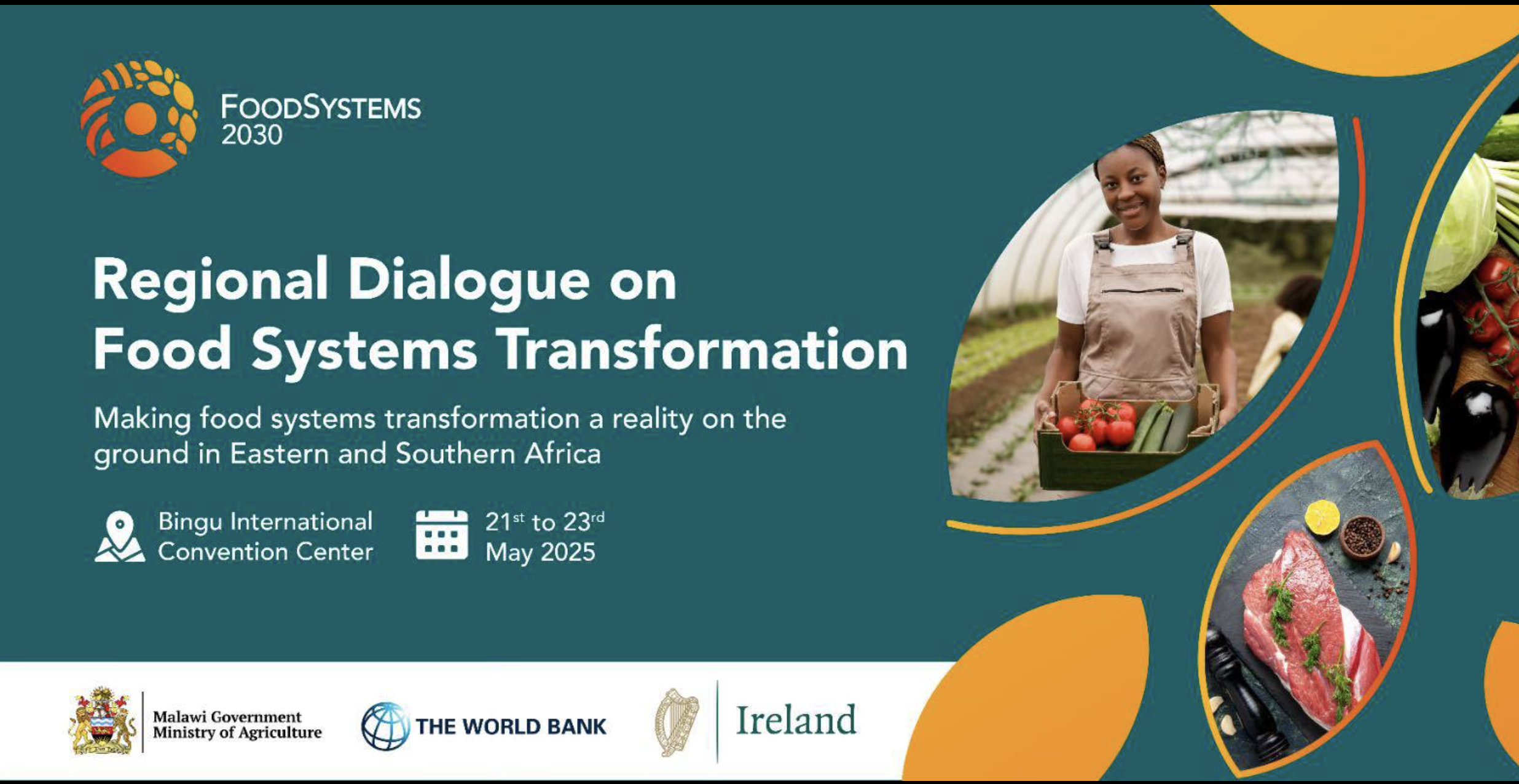
By Special Correspondent | Lilongwe, Malawi — May 2025
In an era where climate change threatens to derail decades of agricultural gains across Africa, Rwanda is emerging as a trailblazer in designing and implementing a robust, climate-resilient food system. During the high-level Regional Dialogue on Food Systems Transformation held in Lilongwe, Dr. Chantal Ingabire, Director General for Planning in Rwanda’s Ministry of Agriculture and Animal Resources, delivered a presentation that was both instructive and inspiring.
Her session, titled “Transforming Rwanda’s Agri-Food Systems: Resilience Through Policies and Aligned Investment,” outlined how the East African nation is turning strategy into tangible outcomes, with rural livelihoods, national food security, and climate adaptation at the core.
“We’re not just talking about resilience,” Dr. Ingabire said. “We are institutionalizing it, financing it, and scaling it across our agricultural landscapes.”
Strategic Anchoring: PSTA 5 and the Climate Agenda
At the heart of Rwanda’s transformation is its Strategic Plan for Agricultural Transformation (PSTA 5), the latest iteration of a long-standing commitment to modernization and food system reform. Dr. Ingabire explained how climate resilience has become a central pillar in this strategy, embedded in both long-term planning and annual investment frameworks.
“From policy to project level, resilience is no longer a side issue—it’s the foundation,” she noted. “Our goal is not only to grow more food, but to grow food that withstands shocks and sustains prosperity.”
The government’s deliberate alignment of planning, budgeting, and policy development has created a coherent national vision for agricultural resilience—one that other African countries are now looking to emulate.
Climate-Smart Investments: From Irrigation to Inputs
Rwanda’s commitment to resilience is reflected in the breadth and depth of its investments in climate-smart agriculture. Dr. Ingabire presented a compelling overview of current initiatives, many of which are already delivering visible impact.
Among the standout projects are:
- Gabiro Agribusiness Hub and Muvumba Multipurpose Irrigation: Large-scale irrigation schemes that secure year-round food production and reduce farmers’ reliance on unpredictable rainfall.
- Kagitumba Center Pivot Irrigation System: A state-of-the-art facility demonstrating modern irrigation efficiency and crop productivity.
- Inyange Milk Powder Plant Equipment: Supporting post-harvest value addition and preservation of dairy products.
“Whether in irrigation, input subsidy reform, or postharvest storage, our investments are intentional—they are designed to protect farmers from climate variability while enhancing competitiveness,” she said.
She also emphasized subsidized access to climate-resilient inputs, such as improved seed varieties and fertilizers that are better suited to the changing climate. These subsidies, she noted, are not blanket handouts but carefully targeted tools that support both equity and efficiency.
De-risking Agriculture: The Insurance Revolution
One of the most progressive elements of Rwanda’s approach is its national agriculture insurance scheme, which offers coverage to smallholder farmers at 40% subsidized premiums.
“De-risking agriculture is essential. Without financial protection, a single flood or drought can push a farmer into poverty for years,” Dr. Ingabire explained.
The insurance program is already making a difference, providing farmers with the confidence to invest in their farms and adopt improved practices. It also strengthens financial inclusion by linking farmers to banks and cooperatives willing to lend to insured clients.
As weather extremes become more frequent, Rwanda’s model could become a continental reference for integrating climate risk management into rural finance.
Closing the Gaps: Post-Harvest Infrastructure for Sustainability
Beyond production, Rwanda is equally focused on reducing post-harvest losses, a critical yet often neglected part of the food systems puzzle. Dr. Ingabire highlighted recent investments in mobile maize dryers and other decentralized storage solutions to preserve harvests and stabilize markets.
“Losses after harvest can be as devastating as crop failure,” she said. “Our job is to ensure that what farmers grow is not lost to poor storage, pests, or market disruptions.”
She also explained how post-harvest investments are helping to stabilize food prices, reduce dependence on imports, and create jobs along the value chain.
A Broader Question: How Can Africa Sustain and Scale?
As her presentation drew to a close, Dr. Ingabire posed a challenge to the entire continent: How can African nations sustain and accelerate their own food system transformations amid escalating climate threats?
She offered three critical takeaways:
- Anchor resilience in policy: It must be central to national development plans, not an add-on.
- Align investments: Every dollar spent should serve both productivity and resilience.
- Create enabling ecosystems: From insurance to infrastructure, the right support systems must surround the farmer.
She also called for more regional collaboration, particularly in technology sharing, cross-border trade, and harmonization of climate-smart standards.
A Model Worth Replicating
By the end of the session, it was clear why Rwanda’s food systems strategy is gaining global attention. It is comprehensive, coherent, and committed to measurable results.
Rwanda is not merely reacting to climate change; it is preparing, adapting, and leading. With a blend of visionary policy, targeted investment, and farmer-focused innovation, the country is demonstrating what climate-resilient transformation looks like—on paper, on the ground, and in the lives of its people.
As Dr. Ingabire concluded: “We have shown that it can be done. The next step is for all of us across Africa to do it—together.”

2 thoughts on “Rwanda Leads the Way: Dr. Chantal Ingabire Showcases National Blueprint for Climate-Resilient Food Systems”
Comments are closed.